Discover 10 hidden attractions, cool sights, and unusual things to do in Charlestown (United States). Don't miss out on these must-see attractions: Ninigret Pond, Fort Ninigret, and Charlestown Gallery. Also, be sure to include Charlestown Historical Society in your itinerary.
Below, you can find the list of the most amazing places you should visit in Charlestown (Rhode Island).
Table of Contents
Ninigret Pond

Lagoon in Rhode Island. Ninigret is a coastal lagoon in Charlestown, Rhode Island, in the United States, located at 41°22′45″N 71°38′43″W. It is the largest of the nine lagoons, or "salt ponds", in southern Rhode Island. It is utilized for recreational activities, as well as oyster and quahog harvesting. Found along its shores are "extensive" archaeological remains. Ninigret Pond, like others in the region, was "formed after the recession of the glaciers 12,000 years ago". The pond is situated on low-lying ground, and as such, it is considered particularly vulnerable to storm surge flooding. It is connected to Green Hill Pond via a small channel.
The pond is located within the Ninigret National Wildlife Refuge. Both are named for Ninigret, a 17th-century sachem of the eastern Niantic aboriginal American tribe.[1]
Fort Ninigret

Historical landmark in Charlestown, Rhode Island. Fort Ninigret is a historic fort and trading post site at Fort Neck Road in Charlestown, Rhode Island, built and occupied by European settlers in the seventeenth century. At its 1883 dedication, Commissioner George Carmichael, Jr. referred to it as "the oldest military post on the Atlantic coast."[2]
Charlestown Gallery

Museum, Art gallery
Address: 5000 South County Trail, Charlestown
Charlestown Historical Society

Museum
Address: 4417 Old Post Rd, Charlestown
Indian Burial Ground

Cemetery in Charlestown, Rhode Island. The Indian Burial Ground is a historic Native American cemetery on Narrow Lane in Charlestown, Rhode Island. The small cemetery is believed to have been the burying ground for leaders of the Narragansett and Niantic tribes. It is now fenced off by an iron post and rail fence, erected in the late 19th century.
The cemetery was listed on the National Register of Historic Places in 1970.[3]
Joseph Stanton House
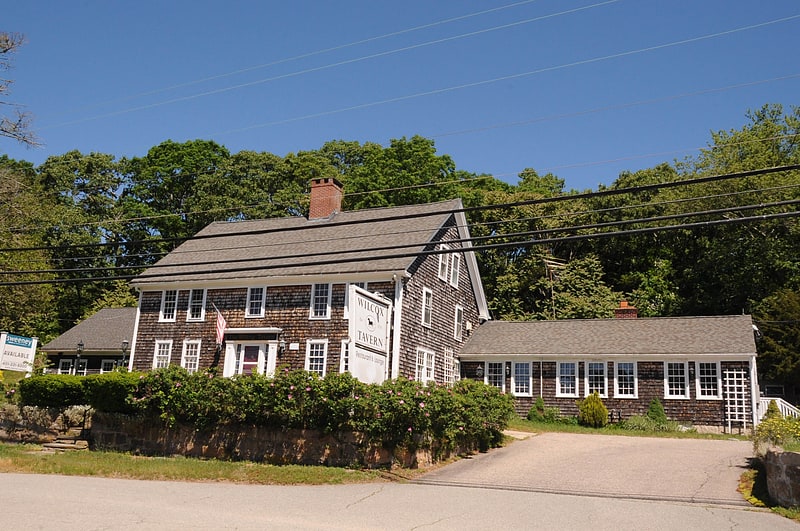
The Joseph Stanton House is a historic house at 5153 Old Post Road in Charlestown, Rhode Island. The main house is a 2-½ story wood-frame structure built some time before 1739 by Joseph Stanton II, and it is where his son Joseph Stanton, Jr. was born. The exterior has a relatively plain finish except for its front door surround, a 19th-century Greek Revival alteration with sidelight windows and pilasters supporting an entablature. A 1930s addition to the rear of the house provides additional space for modern restaurant facilities. The house belonged to Stanton, Jr. until 1811, one of Rhode Island's first United States Senators. He sold it to Edward Wilcox who began operating a tavern on the premises. An obelisk stands nearby memorializing Stanton.
The house was listed on the National Register of Historic Places in 1980.[4]
Joseph Jeffrey House
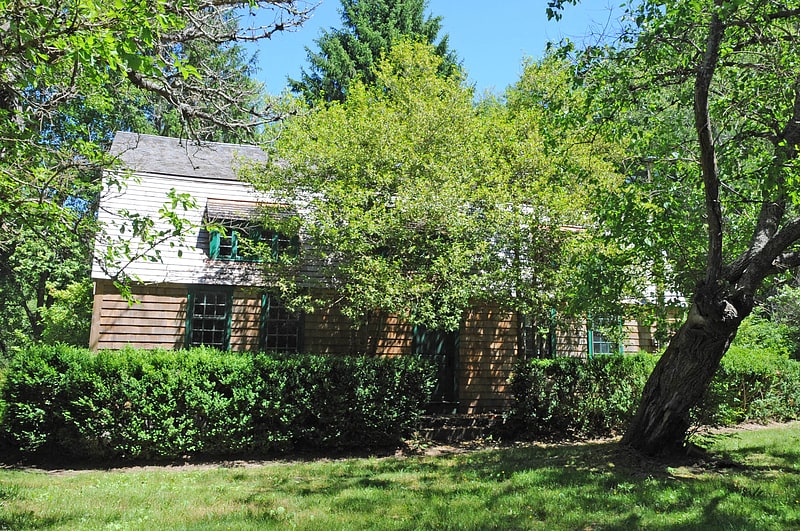
The Joseph Jeffrey House is an historic house on Old Mill Road in Charlestown, Rhode Island. It is located on the east side of Old Mill Road, just south of Saw Mill Pond and Sawmill Brook, on a predominantly wooded 9.5-acre lot. The main house is a 1+1⁄2-story wood-frame structure with a gambrel roof and central chimney, with a small gable-roof ell to the northeast. The oldest portion of the main block appears to be the easterly side, which rests on an old stone foundation, and exhibits construction methods typical of the second quarter of the 18th century. The house was probably built by Joseph Jeffrey, a Narragansett, on land granted to him by the tribe, whose advisory council he sat on.
The house was added to the National Register of Historic Places in 1978.[5]
Babcock House
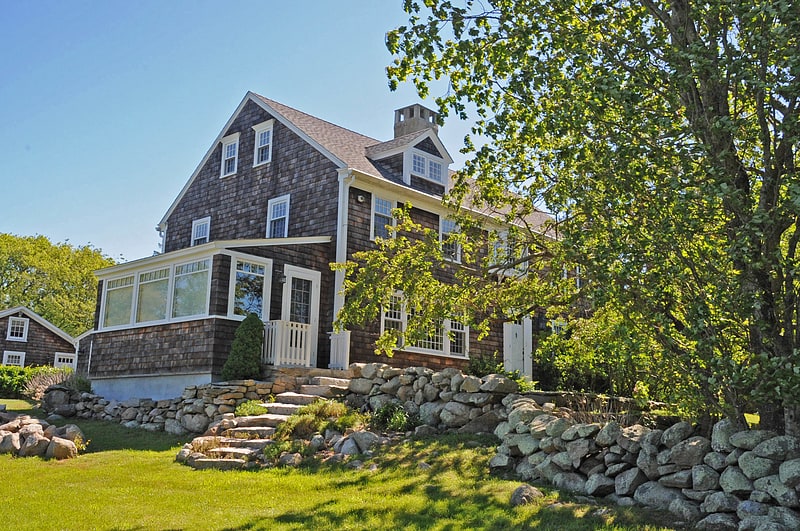
The Babcock House is a historic house also known as Whistling Chimneys, located on Main Street in the Quonochontaug section of Charlestown, Rhode Island.[6]
Cross Mills Public Library
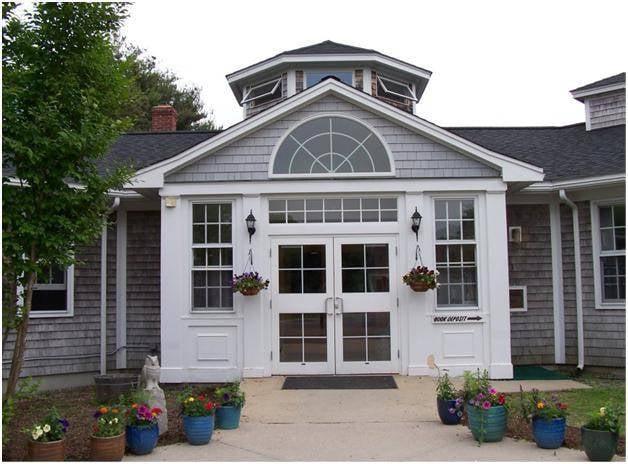
Library
Address: 4417 Old Post Rd, Charlestown
Sheffield House
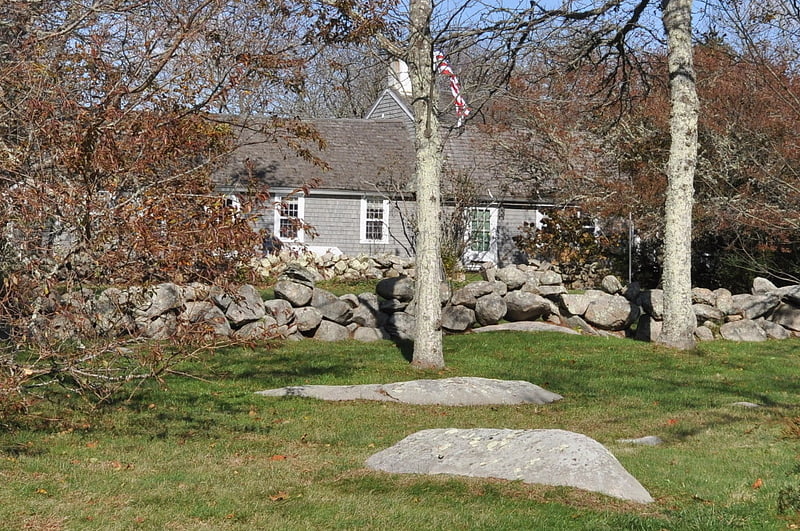
The Sheffield House is an historic house on Beach Road in the Quonochontaug section of Charlestown, Washington County, Rhode Island. It is a 1+1⁄2-story, wood-shingled, gambrel-roofed residence, with a large, stone chimney; a simple entry at the left side of a 3-bay, south-facing façade; and a 1-story wing at the left side. The house was probably built between 1685 and 1713, probably by Joseph Stanton, the third son of Thomas Stanton, one of the original settlers in this area. Joseph's son Thomas, had no surviving sons, so the farm was deeded in 1753 to his son-in-law Nathaniel Sheffield the husband of Rebecca Stanton. Today the house is called the Stanton-Sheffield house.
Since 1845, when the Sheffields sold the house, it has been in the hands of several owners, all of whom have respected its integrity. The Sheffield House is an outstanding example of a Rhode Island farmhouse which has remained relatively unaltered from its construction at the turn of the 17th century. Said to be the oldest home in Charlestown and in an excellent state of preservation, it is a living document of early settlement and vernacular architect.
The house was added to the National Register of Historic Places in 1976.[7]